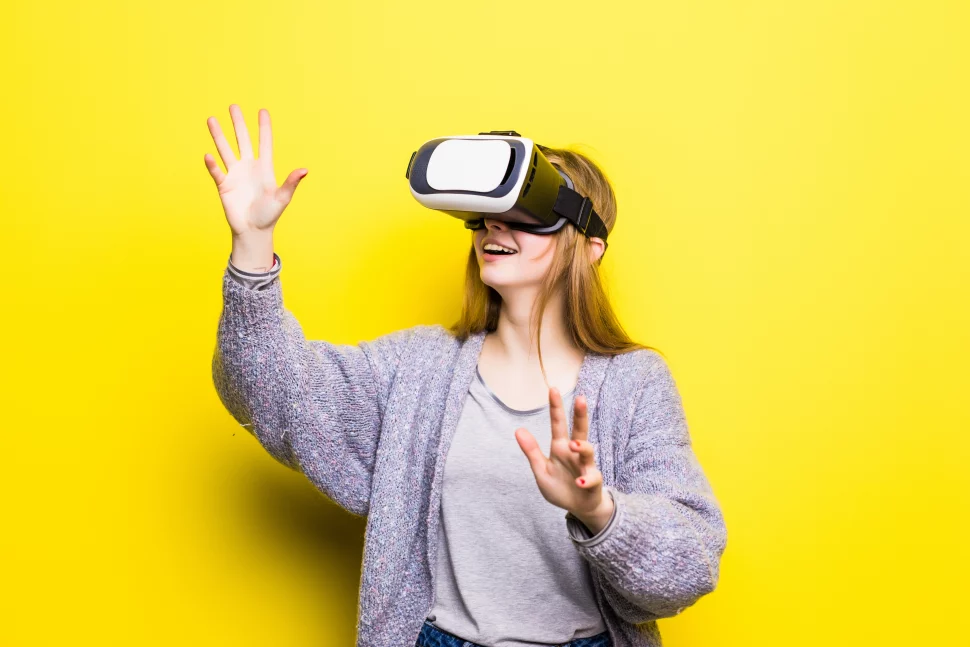Static images, floor plans, and tedious site visits have long characterized traditional property marketing. These conventional methods often left much to the imagination, as they rely heavily on the buyer’s ability to visualize spaces based on limited information. However, integrating Virtual Reality in property marketing has shaken up the real estate industry and presented new ways to navigate the property marketing process. This revolutionary leap is redefining the home-buying experience by providing immersive, interactive, and lifelike virtual tours.
The rise of VR in real estate signifies more than just a technological novelty — it also represents a fundamental transformation in how individuals engage with and perceive the spaces they aspire to call home. This article will explore the emergence of Virtual Reality in property marketing, discussing how it has disrupted traditional practices and ushered in a new era where the boundaries between physical and virtual spaces blur.
Changing Dynamics of the Real Estate Industry
The integration of VR in real estate caused profound changes in the sector, especially in reshaping the dynamics of property marketing. Among the most notable shifts lies in the evolution of buyer behavior, where preferences have gradually veered towards immersive virtual experiences.
Instead of relying on traditional methods like physical site visits, homebuyers now prefer the convenience and immediacy of exploring properties from the comfort of their screen. Whether it’s by using a VR headset or scouting an online map, this evolution is paralleled by an augmented reliance on technology in property searches.
Artificial intelligence (AI) is a pivotal factor in this new home buying process, powering VR technology and guiding buyers toward tailored property suggestions based on their preferences and requirements.
Moreover, this change in buyer behavior also transformed the way homes are showcased to potential buyers on property listings and presentations. Real estate professionals have swiftly recognized the importance of integrating VR into their marketing materials to meet the evolving demands of tech-savvy consumers.
Dynamic, immersive experiences have replaced static images and two-dimensional floor plans. This has enabled prospective buyers to virtually tour potential real estate investments, whether turnkey properties or fixer-uppers. This enhanced showcasing of properties through virtual means has paved the way for better real estate investing experiences, where buyers can envision themselves in a home before ever setting foot inside.
As VR continues to permeate the real estate industry, it fundamentally alters how properties are presented, experienced, and ultimately transacted.
Benefits of Virtual Reality in Property Marketing
As an emerging game-changer in property marketing, VR offers a multitude of benefits that revolutionize the way properties are showcased and experienced. Through immersive experiences and advanced technology, this trend brings a new dimension to the real estate industry that empowers both buyers and sellers alike.
Early Buyer Engagement
The immersive experience that VR offers facilitates early buyer engagement. Prospective buyers can virtually step into a property and explore its features and ambiance. This experience enables them to foster a deeper connection with the listing even before physical visits.
Enhanced Property Visualization
VR significantly enhances property visualization as it provides a lifelike experience that traditional methods cannot replicate. This allows buyers to navigate through spaces and get a realistic sense of layout, design, and spatial proportions — attaining a comprehensive understanding of the property’s setup, features, and potential.
Improved Buyer Decision-Making
In the decision-making process, VR acts as a powerful catalyst. It enables buyers to thoroughly compare and contrast features of the property, enabling them to envision their lifestyle within the space and narrow down choices more effectively.
Increased Accessibility for Remote Buyers
VR breaks down geographical constraints as it provides remote buyers with increased accessibility. Particularly relevant among digital nomads interested in real estate investing, this technology allows potential buyers to virtually tour properties from any corner of the globe. This democratization of property exploration expands the pool of potential buyers and aligns with the evolving nature of a globalized marketplace.
Competitive Edge for Marketing
Embracing Virtual Reality in property marketing grants a competitive edge to those who embrace this innovative technology. Sellers and agents adopting this trend stand out in a crowded market, offering a cutting-edge and memorable experience that sets their listings apart from the conventional competition. It also positions them as forward-thinking and technologically adept entities that a new generation of homebuyers will find highly appealing.
Challenges and Considerations of Virtual Reality in Property Marketing

While VR delivers significant changes in property marketing, its integration is not without challenges and considerations. Acknowledging and navigating potential obstacles is crucial for a seamless adoption of this transformative technology.
One of the primary concerns revolves around the potential obstacles and limitations of Virtual Reality in property marketing. From the cost of implementing VR solutions to the necessity of specialized equipment, accessibility can pose challenges for both sellers and potential buyers.
Additionally, ensuring a consistent and high-quality virtual experience across diverse properties presents a technical hurdle that demands attention.
Addressing concerns related to technology adoption is crucial for the VR revolution in real estate. Skepticism and hesitation can arise, especially among those less familiar with or resistant to technological advancements.
Establishing user-friendly interfaces, providing clear instructions, and offering support channels are strategies that can mitigate doubt and bridge the gap between traditional and tech-driven real estate experiences.
Strategies to address concerns and maximize benefits involve a holistic approach that goes beyond technological considerations. Integrating VR into a broader marketing strategy — combining it with traditional methods — can create a seamless and inclusive experience.
What’s more, collaboration between real estate professionals and VR developers is paramount to ensure that the technology meets the specific needs of the industry. Along with this is the continuous innovation and updates to VR applications, ensuring that the technology remains an adaptive tool in the ever-changing landscape of property marketing.
Conclusion
The transformative impact of Virtual Reality in property marketing is evident in its ability to offer early buyer engagement, enhance property visualization, and provide a competitive edge. As virtual reality continues to evolve, its future potential in real estate remains boundless.
That’s why stakeholders must embrace VR technology to harness and maximize its current benefits and capacity to reshape the future of the industry. The marriage of innovation and real estate is inevitable, and those who proactively integrate VR stand at the forefront of this dynamic transformation.



